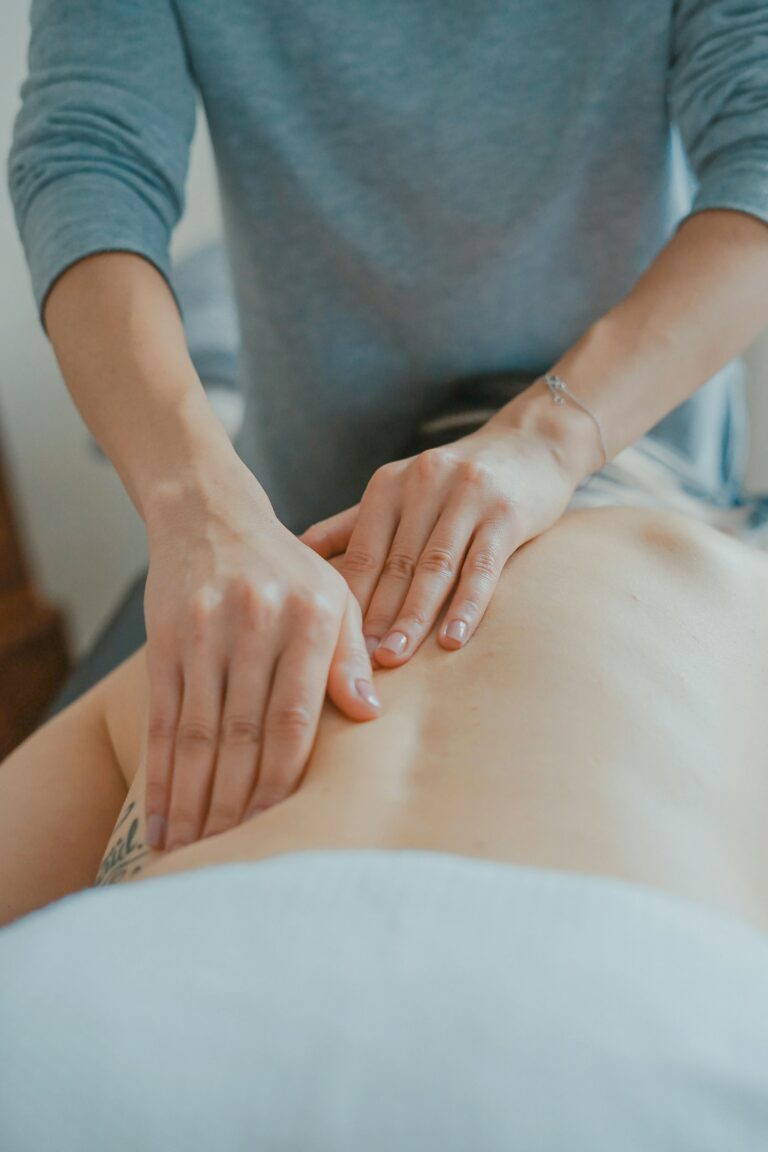Trying to understand stretch marks might feel like wrestling with uncertainty: one day the skin is untouched, the next, those unmistakable lines appear—red, purple, or white, quietly mapping out the changing landscape of your body. Parents, in particular, run into a cascade of questions—Why now? Is it permanent? Could it have been prevented? The reality is that stretch marks, clinically termed striae distensae, are impressively common, stirred by rapid physical changes, and tightly woven into the fabric of human experience. While medical knowledge offers tools for support and relief, myths and mixed messages can fuel frustration or self-doubt. What exactly triggers these streaks? How do hormones, genetics, and life events like pregnancy or puberty influence them? Are all the creams and oils worth the hype, or does science say otherwise? Here, every parent will find not just scientific insights and practical advice, but also a few words of reassurance—stretch marks are no sign of inadequacy, but rather, silent witnesses to growth, transformation, and resilience.
What are stretch marks? Exploring causes, types, and risk factors
Let’s begin at the cellular level. Stretch marks—also called striae—form when the underlying dermal tissue is pushed past its natural elastic limit. Imagine skin like a tightly woven fabric: sudden stretching, triggered by pregnancy, adolescent growth spurts, or even rapid muscle gain, literally tears some of those woven fibers. This action disrupts both collagen and elastin, proteins vital for skin strength and flexibility. The result? Linear scars forming a parallel pattern—sometimes faint and ephemeral, other times vivid and palpable.
But the story doesn’t end there. Enter hormones—especially cortisol—which sneakily lower the skin’s resilience by throttling down collagen production. During pregnancy, fluctuating levels of relaxin and estrogen increase the skin’s pliability but simultaneously render it more vulnerable. Even genetic makeup has a starring role: if family members have a history of stretch marks, odds are increased. Ethnicity and individual skin type also sway the odds, making prediction difficult.
Considering terminology, several types coexist:
- Striae rubrae: The newborns of stretch marks—reddish, violet, sometimes itchy.
- Striae albae: Mature, pale, almost ghostlike—these marks tell of events long past.
- Striae gravidarum: Frequently seen during pregnancy, particularly as the abdomen expands in later trimesters.
Stress, certain steroids, and underlying medical conditions (Cushing’s syndrome, for example) may also contribute, highlighting the need for attentive observation if stretch marks erupt outside of expected times or locations.
Where do stretch marks appear? Mapping the most common areas
A predictable geography unfolds: abdomen, thighs, hips, buttocks, breasts, and upper arms. During adolescence, marks often trace the surges of bone and tissue in thighs or lower backs; for pregnant women, the expanding abdomen becomes a target as connective tissue is stretched to its limit. Interestingly, stretch marks may visit any skin that is experiencing rapid volume change—including the flanks or lower back.
Rarely, stretch marks surface in areas spared from significant mechanical stress, and when this happens, especially if paired with new symptoms like bruising or fatigue, it’s worth discussing with a healthcare professional.
The evolving face of stretch marks: How do they develop, and what do they look like?
In their early stages, stretch marks display as angry, raised strips—radiant with hues of red, deep purple, or even blue. This phase, called striae rubrae, reflects active inflammation and increased blood flow. Touch them, and they may feel tender—occasional itching is common. As the months pass, blood vessels recede, collagen reknits itself, and the marks flatten, fading into striae albae: silvery, white, sometimes faintly depressed compared to surrounding skin. These final forms are permanent in the sense that the skin’s architecture has changed, but visibility almost always diminishes over time.
A few questions may bubble up: Will they ever disappear? Can anything speed up the fading process? The short answers: rarely do they vanish completely, and while some interventions may help, time remains the main ally.
Gentle approaches to prevention: What science really says
Is it possible to prevent stretch marks? Not entirely, but some approaches may offer a measure of support:
- Gradual weight changes: Whether during pregnancy or adolescence, slower and steady growth allows the skin more time to accommodate new demands.
- Hydration: Drinking enough water bolsters skin turgor—the ability to remain elastic and supple.
- Nutrition: A diet rich in vitamin A, vitamin C, vitamin D, zinc, silicon, and protein supplies the raw materials for robust skin structure and repair.
- Moisturization: Applying fragrance-free creams or gentle oils to susceptible areas may lessen dryness or discomfort, but robust data supporting prevention is elusive. Massage, in itself, can enhance local circulation—a small benefit, though not a guarantee.
- Exfoliation: Lightweight, non-abrasive exfoliants may assist by stimulating minor blood flow.
- Exercise: Gentle physical activity supports circulation, strengthens underlying tissue, and keeps abrupt weight fluctuations in check.
- Mild products only: Avoid harsh soaps, aggressive scrubs, or products that disrupt the skin barrier.
- Myth-busting: No lotion, cream, or oil—including those laden with cocoa butter or vitamin E—has definitively proven to prevent stretch marks. Some may soothe itching or add comfort but don’t alter the underlying biology.
- Take care during pregnancy: Avoid any topical treatments involving retinoids and consult a healthcare provider about anything new.
Do stretch marks naturally fade? Science behind the transformation
The lifecycle of a stretch mark is a slow evolution. Over 6 to 12 months—or sometimes longer—striae rubrae yield to striae albae. Blood vessels within the scar contract, metabolic activity quiets, and the skin undergoes a repair process. While genetics and skin type heavily influence how quickly and dramatically stretch marks fade, almost all marks become less prominent. In some, they blend so seamlessly that only touch can reveal them.
But what if stretch marks appear rapidly and in unusual locations, or are accompanied by symptoms like unexplained weight gain or bruising? A medical evaluation can help to rule out underlying conditions.
Exploring treatment options: What actually works for established stretch marks?
Modern dermatology offers some solutions, each with distinct benefits and limitations:
- Topical retinoids: These vitamin A derivatives, such as tretinoin, can boost collagen if used on fresh, red marks—but must be avoided during pregnancy or breastfeeding. For non-pregnant users, results hinge on early and consistent use.
- Hydrating agents: While moisturizing ingredients such as cocoa butter, hyaluronic acid, or olive oil provide comfort and sometimes modestly improve appearance (especially for newer marks), they don’t rewrite skin architecture.
- Professional procedures:
- Laser therapy: Lasers target pigment and stimulate deeper collagen renewal, enhancing texture and fading coloring.
- Microneedling: Controlled micro-injuries signal the skin to regenerate, gradually smoothing unevenness.
- Chemical peels, radiofrequency, and microdermabrasion: These approaches aim to resurface and nudge new collagen growth.
- Carboxytherapy: Injection of carbon dioxide gas, still debated, can stimulate blood flow and tissue repair.
Of note, expectations are paramount: these treatments soften, not erase; most require multiple sessions; and success is influenced by the age and color of the stretch mark, as well as individual skin behavior. Always consult a board-certified dermatologist before starting any medical or cosmetic intervention.
Practical daily tips and embracing self-confidence
Living with stretch marks invites both logistical and emotional choices:
- Moisturize regularly to alleviate any residual itch or tightness.
- Choose products kindly: opt for those designed for sensitive skin, skip heavy fragrances, and beware of harsh additives.
- Balanced diet, steady hydration: Everyday skin maintenance starts with what’s on the dinner table and in your glass.
- Comfortable exercise routine: Activity supports both physical and psychological wellbeing.
- Camouflage options: If self-consciousness kicks in, tinted body creams or self-tanners can temporarily soften contrast.
- Focus beyond the skin: Open, frank conversations within the family about body changes—treating stretch marks as normal, not shameful—can nurture lasting self-esteem.
- Professional help: For those distressed by their appearance or struggling emotionally, a healthcare provider can offer support and advice.
Sorting fact from fiction: Stretch mark myths debunked
- No cream, oil, or magic elixir can truly erase stretch marks.
- Hygiene—how often you bathe or scrub—has zero impact on their formation.
- Anyone can get stretch marks: pregnant or not, teen or adult, muscular or petite.
- Exercise bolsters health, but doesn’t make skin immune to tear or hormonal changes.
- Treatments, even high-tech ones, offer improvement, not perfection. Patience and consistency matter far more than “miracle” promises.
Key takeaways
- Stretch marks tell a story of growth, transformation, and adaptation—visible reminders of life’s milestones, not defects.
- Their appearance is shaped by hormonal shifts, rapid bodily changes, and genetics—factors that are often beyond voluntary control.
- While full prevention is rare, supporting skin through healthy weight management, adequate hydration, and nutrition offers small benefits.
- Stretch marks almost always fade with time; rarely do they create medical issues.
- Treatments vary in efficacy; none guarantee complete removal, but some can meaningfully soften their look.
- Empowerment comes from information and self-acceptance: acknowledging that these marks are common, natural, and not a measurement of parenting quality or personal worth.
If you’re seeking tailored advice or looking to track your family’s health, resources abound. For personalized tips and free health questionnaires specific to your children, consider downloading the Heloa app—a practical companion on your journey through parenting and wellness.
Questions Parents Ask
Can children or teenagers get stretch marks, and should parents be worried?
Yes, stretch marks can appear in children and teenagers, especially during periods of rapid growth such as puberty. These marks are a natural response to the body changing quickly, like during a growth spurt, and are very common in adolescents. Rassurez-vous, stretch marks in young people are generally harmless and reflect normal development. If you notice sudden changes or other symptoms like fatigue or bruising, it can be helpful to check in with a healthcare provider, but in most cases, there’s no cause for concern.
Do stretch marks hurt or itch?
Stretch marks might sometimes cause mild discomfort, especially at the beginning when the skin is stretching rapidly. It’s not unusual for children, teens, or adults to notice itching or a sensation of tightness in the affected area. These feelings typically ease as the marks mature. Applying gentle moisturizers can help soothe the skin and reduce any discomfort. If significant pain or severe itching develops, it may be worthwhile to seek further advice from a healthcare professional.
Are there any health risks associated with stretch marks?
Stretch marks themselves pose no health risks—they are simply a change in the skin’s appearance. Their presence doesn’t cause any physical harm and doesn’t impact overall health. Rarely, if stretch marks appear suddenly and are accompanied by other symptoms such as unexplained weight changes or skin fragility, it can indicate something else is happening in the body. In these rare instances, discussing your observations with a doctor is encouraged. Most of the time, however, stretch marks are just a normal sign of growth or bodily changes.
Further reading:









